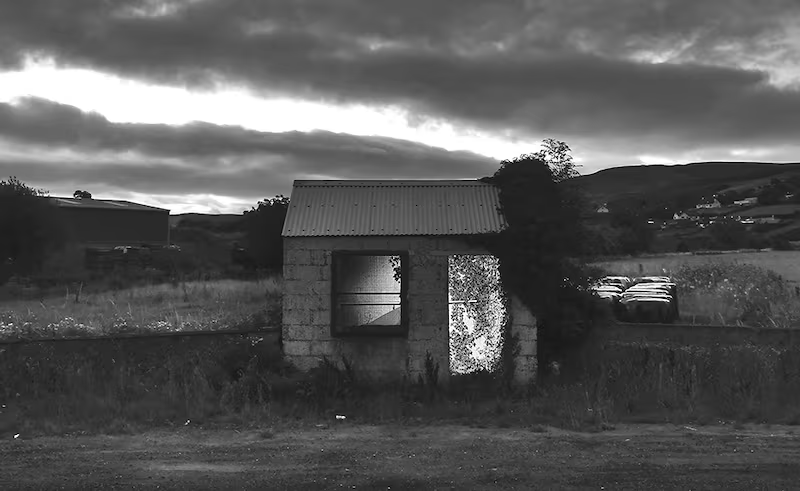The Border between the Republic of Ireland and Northern Ireland has been the issue that has bedevilled the Brexit negotiations, one that has overshadowed the departure of the United Kingdom from the European Union.
Against this background, and in light of the misunderstandings that surround the issue of the Irish Border, The Irish Times has brought together a volume of information that traces the lives lost in the Troubles, the Border crossings and the stories of tragedy and loss linked with many of them.
[ Brexit Borderlands: If you are reading in the app go hereOpens in new window ]

This is part of what will be an expanding collection of material and research from a team of journalists setting out how Brexit will impact upon the lives of people on all parts of the island of Ireland – but particularly on those who live daily in the shadow of the Border.
The crisis provoked by the need to ensure that the Border remains “open” in all circumstances has come as a surprise to many of those who voted in the referendum on June 23rd, 2016.
Since the Brexit vote, the issue of the Border in the negotiations has strained ties between Dublin and London and caused significant damage in the relations between the Irish Government and the Democratic Unionist Party in Northern Ireland.
Prospect of United Ireland
Indeed, it has encouraged many, or some nationalists in Northern Ireland, along with some unionists, to think more favourably about the prospect of a United Ireland – even if the Irish Government has continually insisted that it does not want decisions on that matter to be affected in any way by Brexit developments.
The UK's departure from the EU means Northern Ireland is leaving the bloc, so unless some special measures are agreed, checks would be required along the 499-kilometre Irish Border as different trade rules would apply north and south after Brexit. The Border in Ireland will become the only land border between the UK and the EU after Brexit – one as important to the EU as major crossing points in Eastern Europe.
The 1998 Belfast Agreement – better known internationally as the Good Friday Agreement – laid the foundation for Northern Ireland's peace process with many all-island rules and institutions.
Neither side, to be fair, wants the return of border checks because of the risk to peace, with fears that a physical border infrastructure would be considered a potential target for paramilitaries.
Brussels believed a hard border could be avoided and the Belfast Agreement upheld if Northern Ireland remained fully aligned with the European Union's customs union and part of the single market after Brexit.
This would mean matching the rules north and south of the Border for customs, energy, environmental regulations and laws covering agriculture and fisheries.
Northern Ireland would stick, too, to EU rules covering state aids and would fall under the jurisdiction of the European Court of Justice in applying those rules.
UK-wide backstop
The European Union's chief negotiator, Michel Barnier, initially insisted that this so-called backstop could only apply in Northern Ireland.
London argued that if the backstop only applied to Northern Ireland, it would effectively create a customs and regulatory border in the Irish Sea. The DUP also objected.
Under British prime minister Theresa May’s current plan, the backstop would apply to the United Kingdom as a whole. However, the current proposal is still strongly opposed by the DUP and many hard Brexiteers.
Everyone involved – Brussels, Dublin, May – has insisted again and again that the backstop is an insurance policy, one that no one wants to use.
Instead, they emphasise that it would only apply if the EU and UK could not reach an overarching free trade deal that would make trade so frictionless that there would be no border between the EU and the UK, including on the frontier between Northern Ireland and the Republic. However, these assurances have not dampened down opposition to the withdrawal agreement.
Despite what some in the United Kingdom believe now, the warnings about the implications that Brexit could have on the Border were given before UK voters went to the polls in June 2016, not least by the then taoiseach Enda Kenny in London in January 2016 after a meeting in Downing Street with David Cameron.
“From our perspective it would create serious difficulties for Northern Ireland and I don’t want to see that happening,” Mr Kenny declared later, speaking to journalists.
‘Scare tactics’
Immediately, Mr Kenny was criticised by the Democratic Unionist Party and by some in the Conservative party, with DUP MP Sammy Wilson saying that Mr Kenny had been recruited by Mr Cameron to spread the "scare tactics of the pro-Europe camp in the United Kingdom".
Days before the referendum, Mr Kenny returned again to London. Before doing so, he warned that he could not see any way in which the introduction of border checks could be avoided if the UK voted to leave.
“Were that to happen, obviously it means paperwork, it means administration, it means lost time, it means greater inefficiency, it means greater cost.
“It would not be the wish of the Irish Government that there would be a restoration of customs and border controls, but that would not be in our capacity not to have it,” he warned.
Now one of the key questions is what happens if the withdrawal agreement is not finalised and there is a no-deal Brexit. No side wants to impose border checks, but to avoid smuggling and protect the EU single market, the Irish Government would come under pressure to do so.















